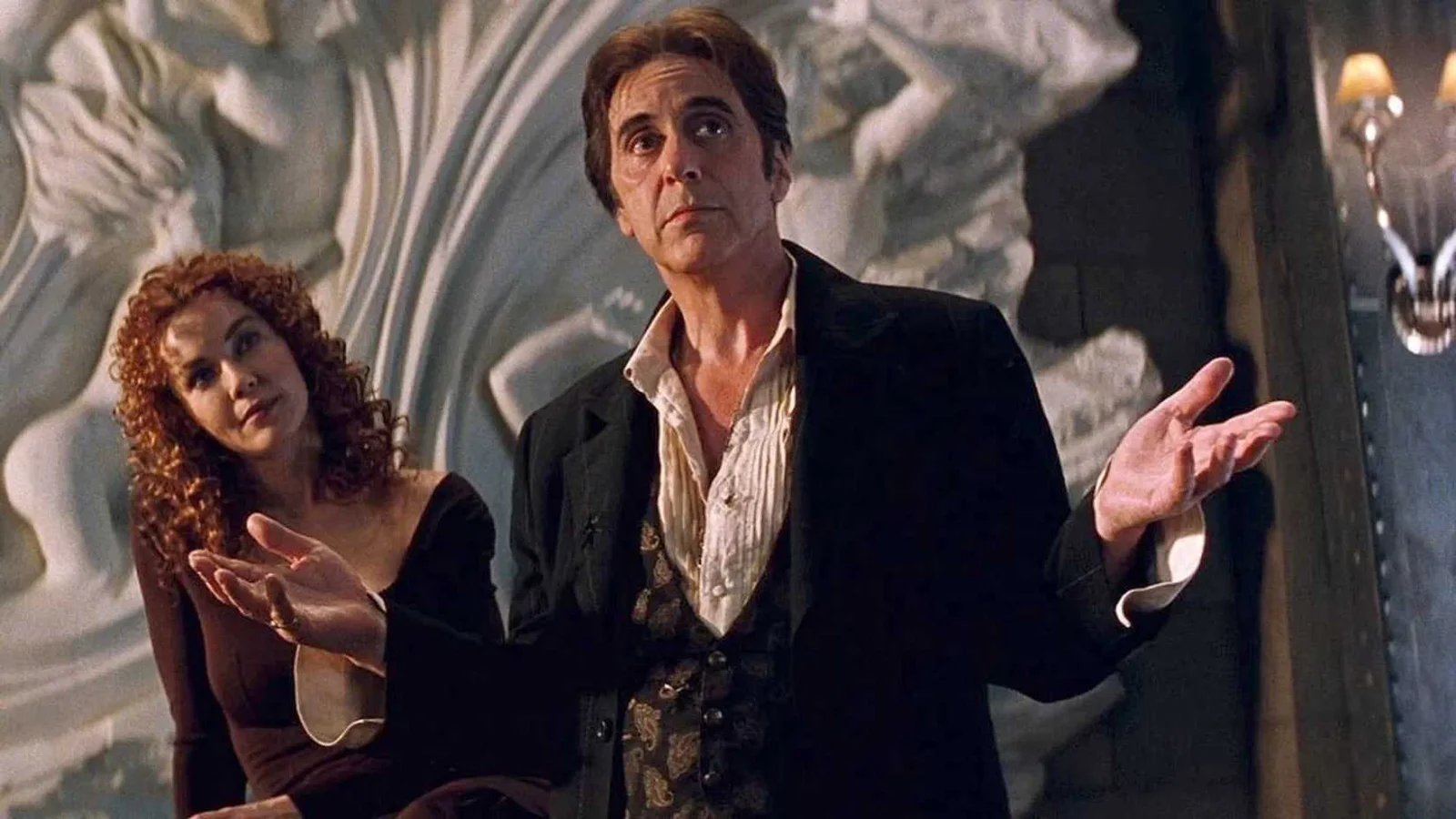Al Pacino’s portrayal in the 2002 sci-fi film S1m0ne anticipated the modern controversies surrounding AI-generated actors, highlighting a future conflict between human artistry and digital imitation. The emergence of Tilly Norwood, the fully AI-created actress introduced at the 2025 Zurich Film Festival, has stirred passionate opposition from SAG-AFTRA, echoing the film’s warning about losing control over authentic performance to artificial reproduction.
The Premise of an Artificial Star in Early 2000s Cinema
In S1m0ne, Al Pacino plays Viktor Taransky, a director whose filmmaking career is struggling until he invents a digital actress named Simone, performed by Rachel Roberts. Simone immediately captivates audiences worldwide, quickly becoming a sensation, but as she outshines her creator, Viktor’s pride and control begin to fracture. The film critically explores Hollywood‘s obsession with flawless images and the perils when illusion replaces genuine artistry.
A Satirical Examination of Hollywood’s Obsession with Fame and Image
S1m0ne offers a sharp and humorous critique of how celebrity culture prioritizes image and marketability over creative substance. The virtual star rises through awards, magazine covers, and endorsements without any real human behind the persona, exposed only by the relentless demands placed upon her to remain visible in shows, interviews, and concerts. This endless cycle reveals how superficiality often takes precedence over authentic talent in the entertainment industry.

Viktor Taransky reflects on the shifting industry values, lamenting the days when actors were dedicated to craft instead of focusing on spectacle, saying that contracts have become productions of their own, filled with bizarre requirements. Pacino’s character voices a bitter view on how Hollywood rewards those who “fake it for the gram,” pushing sincere artists into obscurity.
Written, directed, and produced by Andrew Niccol, known for works like Gattaca and The Truman Show, the film spins this anxiety into satire. Simone embodies an artist shaped by external pressures to conform to an artificial ideal rather than creative freedom. Despite Viktor’s protestations against Hollywood’s control, he is himself obsessed with dominance, programming Simone to obey him and manipulate others. He instructs her:
If in doubt, do it the Taransky way.
The movie balances its tone between humor and caution, blurring lines between satire and serious reflection on where art and technology might intersect.
How the Fiction of S1m0ne Mirrors Today’s AI-Driven Debates
The unveiling of Tilly Norwood in September 2025 by the talent studio Xicoia ignited fierce backlash from the acting community, renewing debates about the rights and role of AI creations in entertainment. SAG-AFTRA condemned the move, insisting on the fundamental importance of keeping creativity centered around humans. Their statement underscored the ethical dilemma, stating:
Creativity is, and should remain, human-centered. The union is opposed to the replacement of human performers by synthetics.
The union also clarified the nature of Tilly Norwood, emphasizing:
“To be clear, Tilly Norwood is not an actor — it’s a character generated by a computer program trained on the work of countless professional performers — without permission or compensation.”
— SAG-AFTRA
This opposition extends beyond the union, with prominent actors like Emily Blunt calling Norwood’s arrival really, really scary, warning agencies to cut ties with AI-generated avatars. Natasha Lyonne described the development as disturbed, while others have pushed for a collective boycott of agencies working with AI characters. These reactions highlight the real-world anxieties that S1m0ne portrayed decades earlier.
The Lasting Influence of S1m0ne on the Industry’s Future
What was once purely speculative fiction in S1m0ne now resonates as a prescient commentary on the evolving entertainment landscape. Viktor Taransky’s struggles to control an illusion that outpaces him foreshadow the current tensions created by AI-generated performers like Tilly Norwood. His character reflects both a resistance to and an obsession with control and image, mirroring Hollywood’s own complex relationship with technology and authenticity.
As the industry confronts these dilemmas, the film’s themes remain crucial: how to balance technological progress without sacrificing the human essence foundational to acting and storytelling. The response from SAG-AFTRA and actors signals that the fight to protect human creativity is intensifying, with the future of performance art at a critical crossroads.
